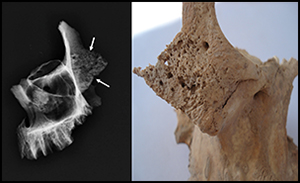Published online by Cambridge University Press: 17 February 2016

The migration of individuals and populations was a powerful factor in the spread of diseases among early human societies. Analysis of human remains from Tell Masaikh in the Middle Euphrates Valley provides a striking example in what is probably the earliest case of hereditary anaemia. Skeletal changes were consistent with thalassaemia, an uncommon disease in the steppe areas of Syria. Genetic analyses of the remains confirmed the pathological assessment and also suggested that the individual was of Asian descent, from the Indian Peninsula. Such an ancestry could then explain this unusual occurrence of thalassaemia.